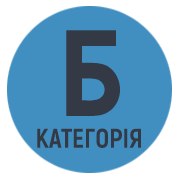PSYCHOLOGICAL CHARACTERISTICS OF THE SUBJECT'S CREATIVITY IN THE STRUCTURE OF ACADEMIC AND PROFESSIONAL SELF-REGULATION
DOI:
https://doi.org/10.51547/ppp.dp.ua/2023.3.17Keywords:
subject, academic and professional self-regulation, motivation, figurative creativity, verbal creativity, structure, clusterAbstract
This study is devoted to the problem of psychological characteristics of creativity in the structure of academic and professional self-regulation of the subject of activity, the relevance of which is determined by the optimization of the content and methods of higher education in the context of the formation of skills and abilities to choose one's own educational trajectory by the participants of the educational process. The research involved a theoretical-methodological and empirical analysis of the main psychological characteristics of the manifestation of creativity in the structure of academic self-regulation of the subject, conceptualized in terms of the theory of self-determination of educational and professional activity. The test of non-verbal creativity by E. Torrens, the test of verbal creativity by S. Mednik, the questionnaire "Academic self-regulation" by R. M. Ryan and D. R. Connell were actively used as research methods. Academic-professional self-regulation of the subject as a specific, highly conscious type of his activity involves the satisfaction of current educational and professional needs at motivated, conscious and emotional positive levels of mental functioning and in interaction with the surrounding environment, which contributes to academic success, as an important component of further professional development. It was established that in the process of higher education, students with a high level of imaginative creativity have the highest internal motivation, and a high level of verbal creativity in the first year predicts the highest indicators of internal self-regulation. It was found that the identified form of external academic regulation is characteristic of students with high indicators of both verbal and figurative creativity, while introjected regulation is quite negatively related to indicators of creativity of the subject of educational and professional activity. Introjected regulation is negatively related to indicators of creativity of the subject of educational and professional activity, and a low level of imaginative creativity at the beginning of higher education is mutually determined with a high level of manifestation of introjected regulation.
References
Гальцева Т. О. Психологічні особливості включення вчителя в педагогічні системи навчання : автореф. дис…. канд. психол. наук: 19.00.07. К., 2003. 21 с.
Саврасов М. В. Регулятивні чинники креативності суб’єкта навчально-професійної діяльності : дис…. докт. психол. наук: 19.00.07. Одеса, 2021. 484 с.
Тарасюк Л. С. Креативність як феномен людського буття в культурі: автореф. дис. ... канд. філос. наук: 26.00.01. К., 2011. 20 c.
Фальова О. Є. Психологічні особливості особистісного розвитку студентів різних спеціальностей у навчальному процесі вищого навчального закладу: автореф. дис…. канд. психол. наук: 19.00.07. Харків, 1997. 20 с.
Яцюк М. В. Адаптація опитувальника академічної саморегуляції Р. М. Райана і Д. Р. Коннелла (Causal Dimension Scale ІІ SRQ-A). Практична психологія та соціальна робота. 2008. № 4. С. 45–47.
Deci E. L., Ryan R. M. Self-determination theory: A macrotheory of human motivation, development and health. Canadian Psychology, 2008. V. 49. 2008. P. 182–185.



